Why Carrot Blood Orange Kombucha is So Good For You
Blood oranges are packed with vitamin C, essential for immune support, while turmeric adds anti-inflammatory properties. Beyond its health benefits, carrot blood orange kombucha is a fun, zesty, and bubbly drink.
The fermentation process enriches the robust flavors of carrot and blood orange while mellowing out their acidity. The natural sugars in the juices also feed the kombucha culture, fueling a lively secondary fermentation that produces a satisfying fizz. It’s a delightful way to nourish your body with probiotics while enjoying a naturally effervescent beverage!
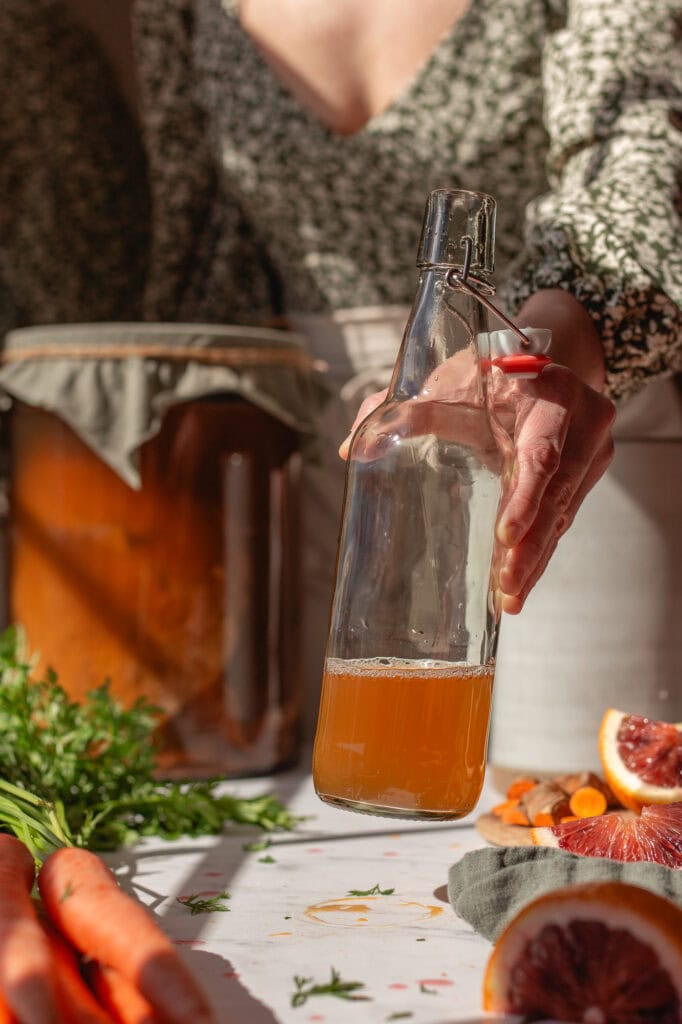
Carrot Blood Orange Kombucha Benefits
The blend of probiotics from fermentation, antioxidant-rich blood orange juice, and anti-inflammatory turmeric provides a host of benefits:
- Gut Health & Digestion: Kombucha’s probiotics help maintain a healthy gut microbiome, aiding digestion and enhancing nutrient absorption.
- Antioxidant Power: Blood orange juice is rich in anthocyanins and vitamin C, which combat oxidative stress and promote cellular health.
- Immune Support: Vitamin C from blood oranges boosts immune function, fights infections, and aids collagen synthesis.
- Heart Health: Studies suggest blood oranges may help lower blood pressure and support cardiovascular health.
- Anti-Inflammatory Properties: Turmeric contains curcumin, known for its anti-inflammatory effects, potentially reducing inflammation and joint pain.
- Metabolism Boost: Kombucha’s organic acids support liver detoxification and may aid in metabolism and fat oxidation.
Regularly consuming this carrot blood orange kombucha provides a flavorful way to nurture your gut health, combat oxidative stress, and support overall wellness with each fizzy sip.
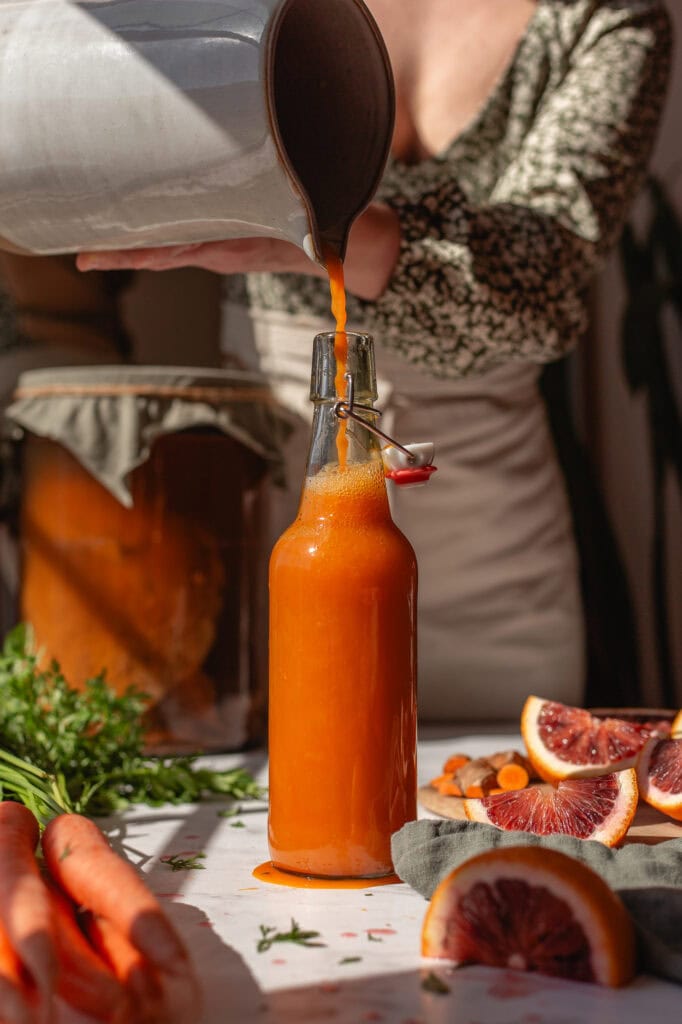
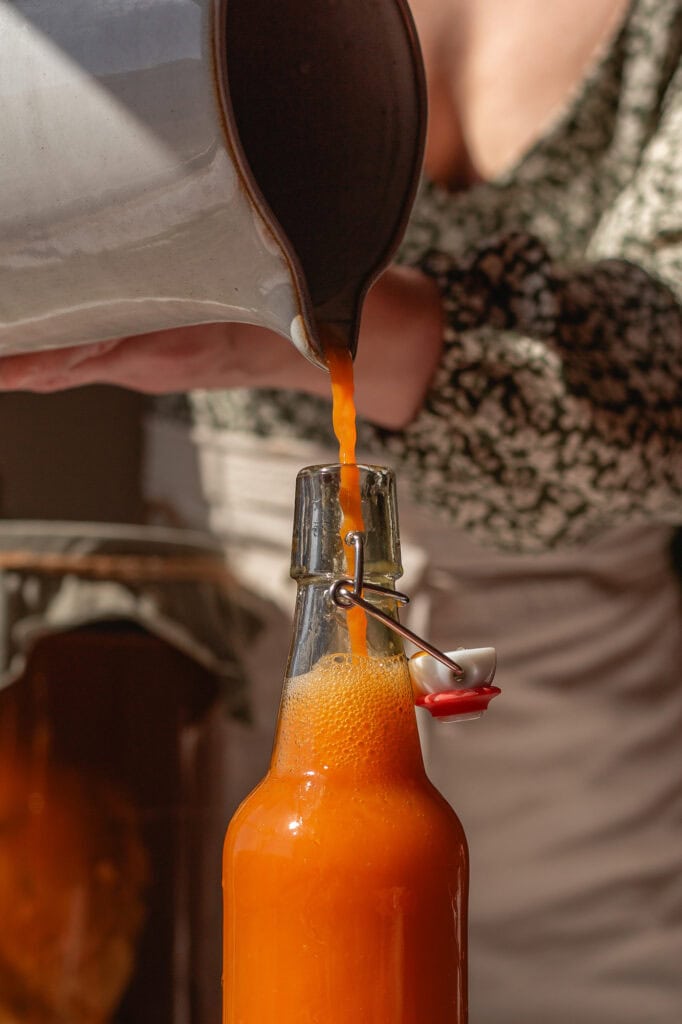
What is Kombucha Secondary Fermentation?
Secondary fermentation transforms kombucha from a tangy tea into a fizzy, probiotic-rich beverage.
Here’s how it works: After the initial fermentation, remove the SCOBY and transfer the fermented tea into carbonation-safe bottles. Add a bit of sugar—in the form of fruit juice—to feed the remaining yeast and bacteria, initiating a second round of fermentation inside sealed bottles.
During this phase, yeast consumes sugars, producing natural carbonation and enhancing the drink’s flavor complexity. The extended fermentation allows the carrot, blood orange, and turmeric to infuse into the tea, balancing acidity and enriching taste. This process further boosts probiotic content, making kombucha healthier and more enjoyable to drink.
Secondary fermentation also results in bubbles! It’s naturally carbonated and packed with beneficial microbes and nutrients—no artificial additives needed.
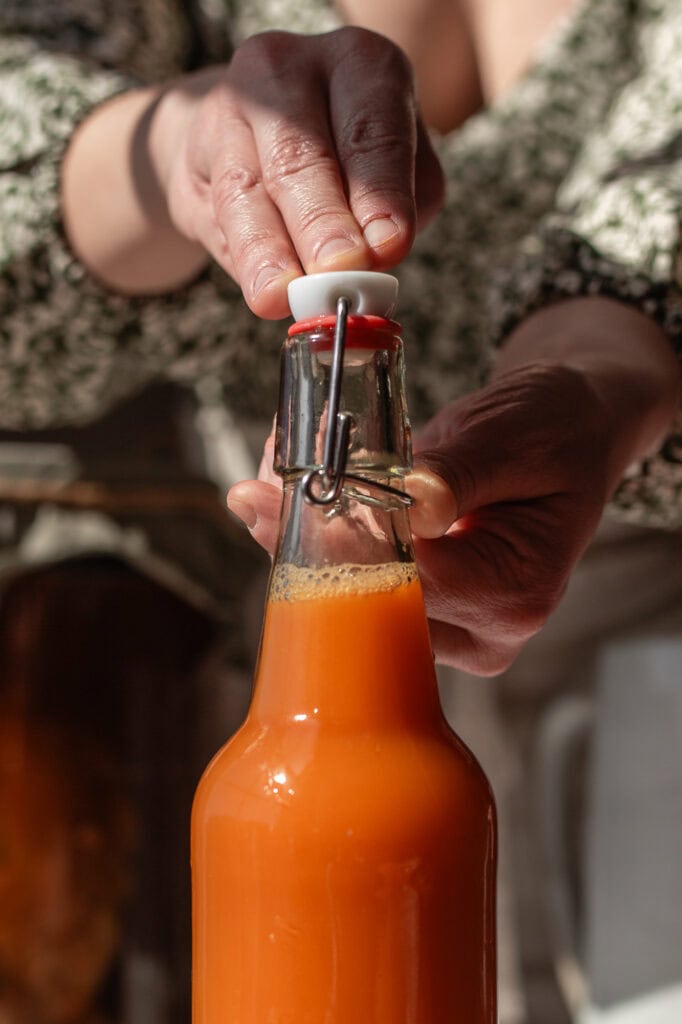
The Best Carrot Blood Orange Kombucha Recipe
To prepare carrot blood orange kombucha, clean your carbonation-safe bottles for secondary fermentation. This recipe yields six cups, suitable for about three 16-ounce bottles. You’ll need fresh pressed juice or 100% juice bottled without additives.
Start by mixing blood orange juice with carrot juice. Split the turmeric root into three and add a third to each bottle. Fill each bottle halfway with fermented sweet tea from the primary fermentation, then top up with the juice blend, leaving an inch of headspace for carbonation. Seal the bottles and gently invert them to mix.
Allow the bottles to ferment at room temperature (70-80°F) for approximately five days. Check for carbonation by opening one bottle—if fizzy, refrigerate to slow fermentation; if not, continue fermenting and check every few days until the desired fizziness is achieved. Once chilled, your kombucha is ready to enjoy!
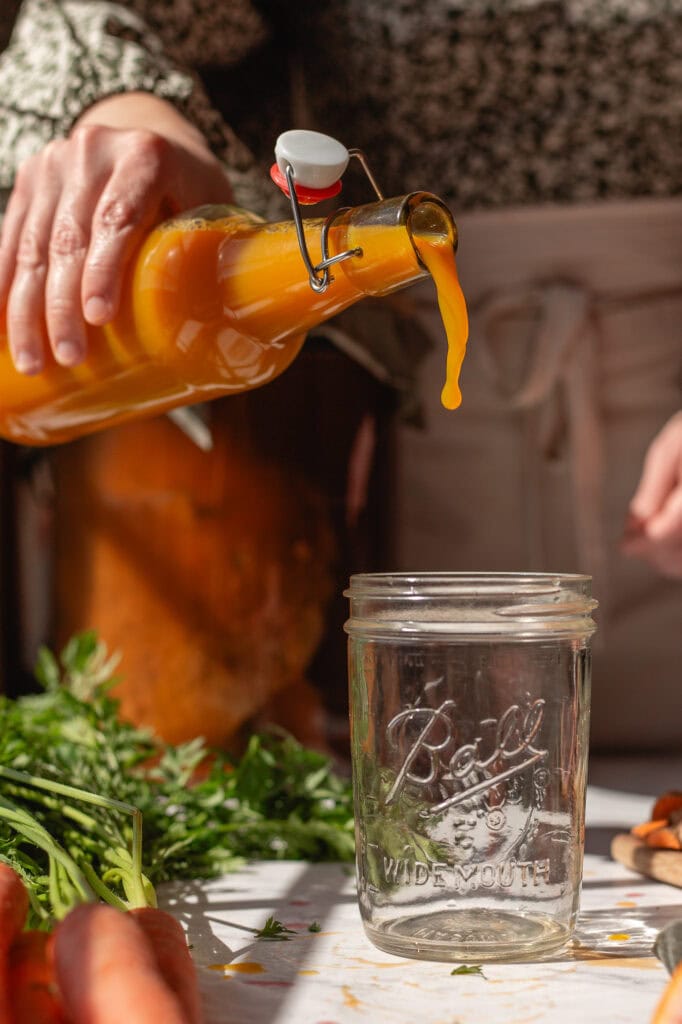

Kombucha Fermentation Supplies
To make this kombucha secondary fermentation recipe, you will need:
- Funnel
- Fermented tea from primary fermentation
- Carrot juice
- Blood orange juice or plain orange juice
- Fresh turmeric root or turmeric root powder
- Carbonation-safe bottles
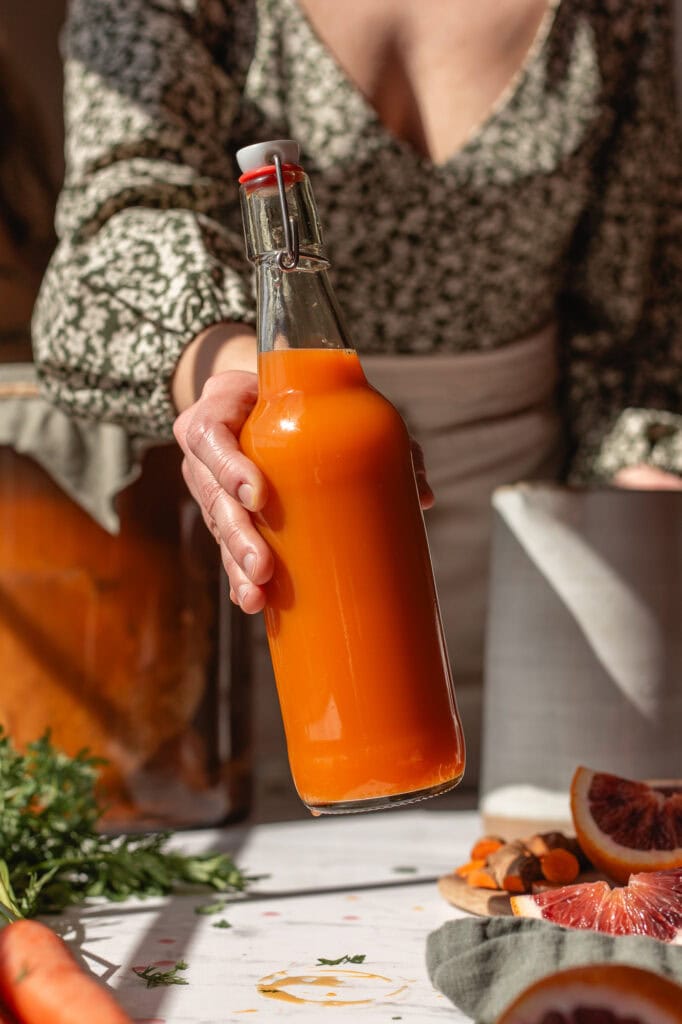
FAQs
How long does carrot blood orange kombucha take to ferment?
This secondary fermentation typically takes about 5 days. But if you are including primary fermentation, the entire kombucha brewing process spans roughly 2 weeks.
Does Kombucha Detox Your Liver?
Kombucha contains organic acids, antioxidants, and probiotics that may support liver health. However, while it aids in detoxification processes, it should complement—not replace—a balanced diet and hydration for optimal liver function. Talk to your trusted health care provider if you have liver issues.

Carrot Blood Orange Kombucha with Turmeric
Boost your gut health with this vibrant carrot blood orange kombucha infused with turmeric! Made with fresh carrot and blood orange juice, it’s naturally fizzy and loaded with antioxidants and anti-inflammatory benefits.
- Prep: 10 minutes
- Cook: 5 minutes
- Total Time: 120 hours 15 minutes
Ingredients
- about 3 cups fermented sweet tea from primary fermentation
- 2 cups carrot juice
- 1 cup orange juice
- 1 tablespoon turmeric root, washed and grated*
Instructions
- It is vital that you use carbonation safe bottles for secondary fermentation. This recipe makes 6 cups, so I use three 16-ounce bottles. You can use fresh pressed juice (see notes) or bottled pasteurized juice; both work great (ensure it’s 100% juice, no additives).
- Mix the carrot and orange juice.
- Evenly divide the turmeric and add some to each bottle.
- Fill a carbonation safe bottle about 1/2 full with fermented sweet tea from primary fermentation.
- Top off the bottle with the juice mixture so there is about an inch of headspace left in the bottle.
- Secure the bottle lid and gently invert it a couple times to mix.
- Allow it to ferment at room temperature (70-80 degrees F) for about 4 to 5 Days.
- Carefully open the lid to see if it is carbonated to your liking. If it is refrigerate, if not continue to ferment for a few more days, carefully checking the carbonation again.
- Keep refrigerated.
Notes
- alternate flavor options: add 2-3 fresh sage leaves instead of turmeric for a different herbaceous flavor that pairs perfectly with blood orange and carrot.
- If pressing your own juice, you can juice the turmeric root with carrots and oranges. If you do not have fresh turmeric root, sub with 1 teaspoon turmeric powder.
- If using fresh pressed juice I suggest heating it to 145° F for a few minutes then cooling before using. This ensures no wild microbes get introduced into the kombucha.
- The juice ratio is slightly adjustable. The best ratio for lower sugar is 3 parts kombucha and 1 part juice. For slightly sweeter, as with this recipe, I do half kombucha half juice.


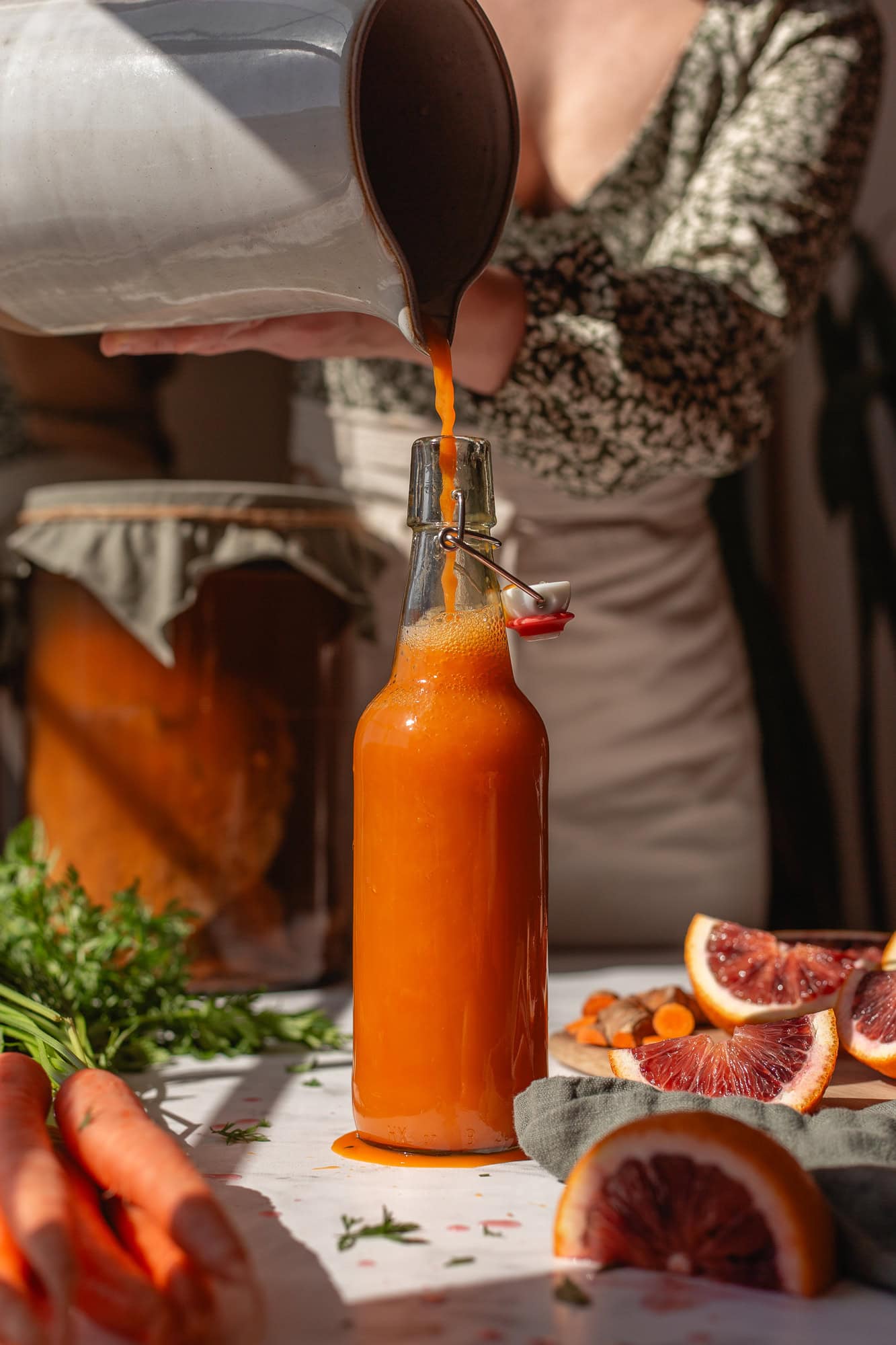
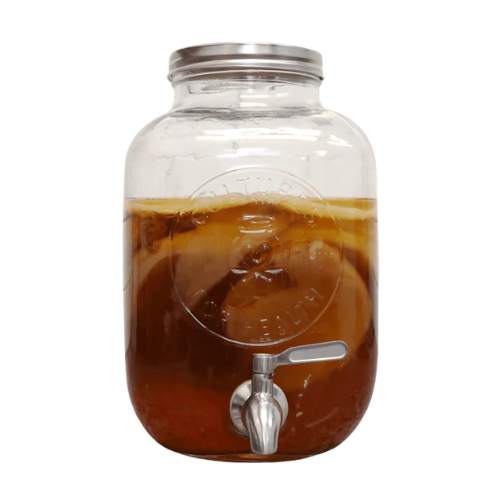
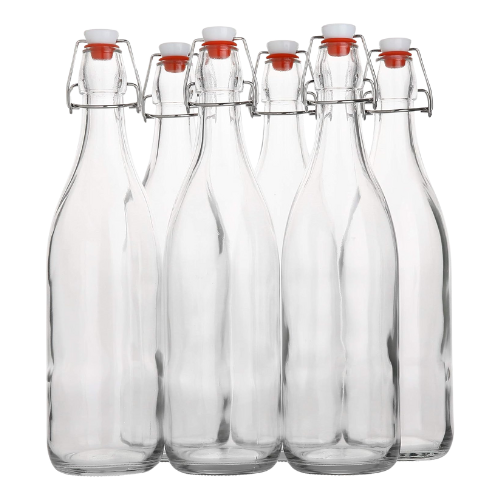
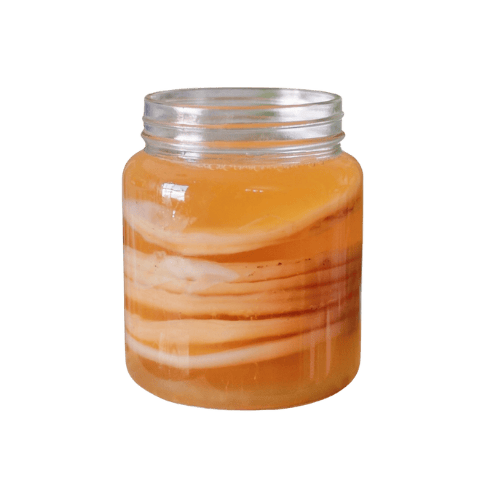



















This looks like a beautiful kombucha! We make a blood orange kombucha in our little microbrewery in Melbourne (https://monceau.com.au) and swear by the natural carbonation of the second fermentation too!